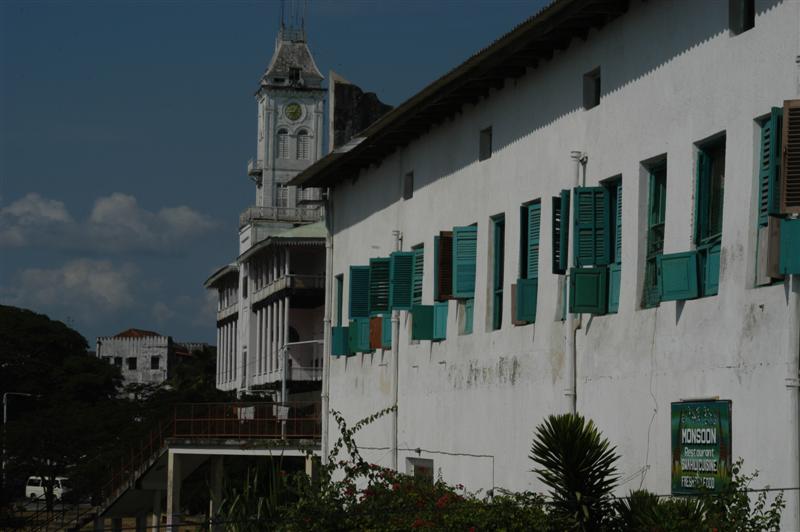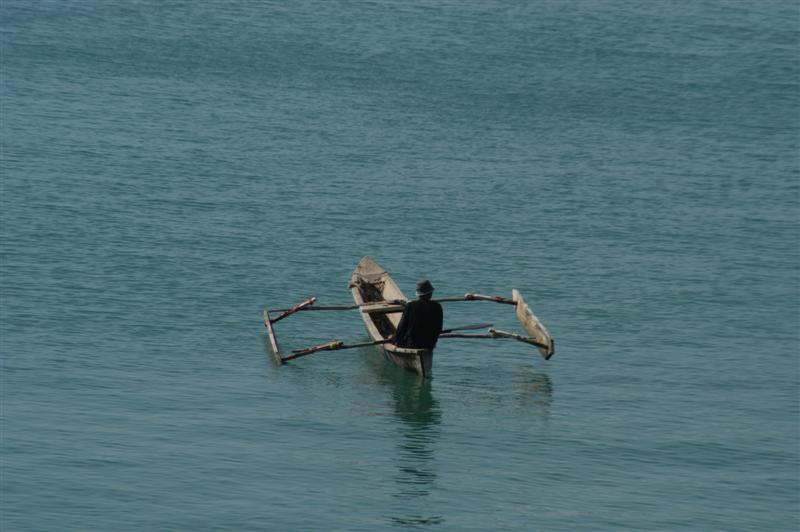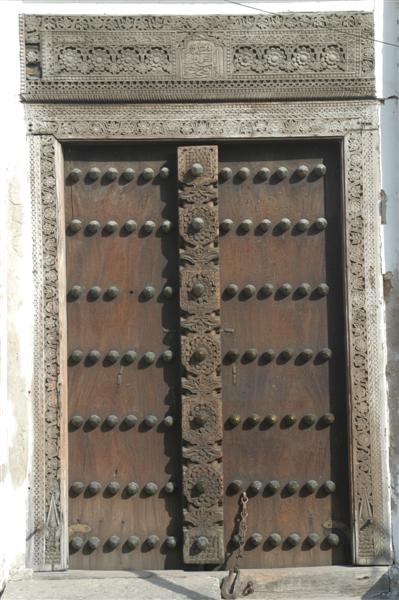July 11. STONE TOWN From our hotel we wandered the streets of old Stone Town, feeling somewhat liberated to be on our own again. The unique architecture, old and dilapidating, was evidence of the islands varied history. Early Persian influence in East Africa yielded the blending of Persians and Black Africans into the Swahili people and language with Islam as the dominant religion. Between the 12th and 15th centuries Zanzibar's ties with the Persian Gulf and Arabia had evolved the archipelago into a powerful city-state with trade ties as far as Asia. The 16th century brought the Portuguese,  who had rounded the Cape of Good Hope in search of Prester John, the Christian leader of Ethiopia. Their influence was relatively short-lived, challenged initially by the British and ultimately by the Omani Arabs. By the early 19th century Zanzibar was firmly under the Omani Sultan and the archipelago had become a major trading center in slaves and ivory. The Sultan of Oman had even relocated his court to Zanzibar. who had rounded the Cape of Good Hope in search of Prester John, the Christian leader of Ethiopia. Their influence was relatively short-lived, challenged initially by the British and ultimately by the Omani Arabs. By the early 19th century Zanzibar was firmly under the Omani Sultan and the archipelago had become a major trading center in slaves and ivory. The Sultan of Oman had even relocated his court to Zanzibar.
It was under Omani rule that the spice plantations were started on the islands, forever giving Zanzibar the name of the "spice islands". By the mid-19th century the islands were trading heavily in cloves and slaves, with an estimated 50,000 slaves passing through the archipelago each year. However, starting back in the 18th century, there was increasing pressure from Britain, with her nearby African protectorates, to end the slave trade. The British bombarded Zanzibar in 1896 in the shortest war in history, lasting less than an hour. The Omani Sultans ruled under a British protectorate until independence was granted to Zanzibar in 1963 and the s ultans were overthrown in 1964. Also in 1964 the leading party of Zanzibar signed a union agreement with Tanganyika (Tanzania), which has stood ever since, much to the distain of the many Zanzibaris. ultans were overthrown in 1964. Also in 1964 the leading party of Zanzibar signed a union agreement with Tanganyika (Tanzania), which has stood ever since, much to the distain of the many Zanzibaris.
The narrow winding streets of Stone Town tell of the islands complex history of influences. The ornately carved Omani-style wood doors still adorn many of the buildings. The spires of the Anglican church mingle with mosque minarets and the towers of Hindu shrines. The faces of Zanzibaris reveal the fusion of African, Arab, Asian and European peoples. The food is embedded with the many spices that still populate the plantations of the archipelago - cloves, allspice, cinnamon, nutmeg, chili and coconuts. No longer as important in the world spice trade the islands are astill reluctant to give up their reputation ast he Spice Island. The Indian curries have a unique Zanzibar flavor, the coffee is spiced with cardamom, and the variety fresh sea foods are served with succulent coconut sauces.
Still, for all of Zanzibar's unique history and delicious food we weren't immediately drawn to the island. A dingy edge hung around the historical buildings and a touristy layer detracted from the cultural character of Stone Town.  Maasai could be seen wandering the streets, miles and miles from their home in the Serengeti, just to tap into another tourist market. A handful of annoying touts roamed the streets trying to extract anything they could from unsuspecting tourists. Most were easily thwarted but the drug influence ones with soggy red eyes and slow slurred speech were unpleasant, occasionally making intimidating remarks. By the end of our first day in Stone Town we were unsure of what to think about Zanzibar, it was as full of contradictions today as it has been throughout its history. Maasai could be seen wandering the streets, miles and miles from their home in the Serengeti, just to tap into another tourist market. A handful of annoying touts roamed the streets trying to extract anything they could from unsuspecting tourists. Most were easily thwarted but the drug influence ones with soggy red eyes and slow slurred speech were unpleasant, occasionally making intimidating remarks. By the end of our first day in Stone Town we were unsure of what to think about Zanzibar, it was as full of contradictions today as it has been throughout its history.
At sunset we met up with Anke, Matt, Andres and Wendy at the Africa House hotel, highly recommended by Danie and Lucinda for the view. The spacious deck with comfortable lounge chairs gradually drew a large crowd of people. The sun slowly descended behind a large palm tree that hung over the sea. The background music ranged from local tunes to American 50's music and even country-western. We shared a hookah pipe over our drinks and looked out over the dark waters for hours.
Returning to our hotel we wove our way through the seemingly familiar alleyways until we found ourselves on the far side of Stone Town,  within reach of our hotel but totally lost. A policemen kindly led us to the door of the Safari Lodge. We had dinner in the roof restaurant before everyone went off to bed. No matter what we thought of Zanzibar or Stone Town we definitely liked the large comfortable beds, clean bathrooms with hot showers, A/C, and the satellite TV at the Safari Lodge. After a month of mostly camping it was a small slice of budget luxury. within reach of our hotel but totally lost. A policemen kindly led us to the door of the Safari Lodge. We had dinner in the roof restaurant before everyone went off to bed. No matter what we thought of Zanzibar or Stone Town we definitely liked the large comfortable beds, clean bathrooms with hot showers, A/C, and the satellite TV at the Safari Lodge. After a month of mostly camping it was a small slice of budget luxury. |
ZANZIBAR
Stone Town
July 11
July 12-14
Nungwi
July 15-18
Stone Town
I: July 19-23
II: July 19-23
Paje
July 23-27
Stone Town
July 27-Aug 1
TANZANIA
Dar Es Salaam
Aug 1-3
Moshi
I: Aug 3-31
II: Aug 3-31
III: Aug 3-31
Safari Circuit
Aug 17
Aug 18
Aug 19
Aug 20
Aug 21
Mt. Kilimanjaro
Aug 23
Aug 24
Aug 25
Aug 26
Aug 27
Aug 28
KENYA
Nairobi
Sept 1
Sept 2
Sept 3
Sept 4-5
UGANDA
Kampala
Sept 6
Sept 7-16
Kampala Short Stories
RWANDA
Kigali
Sept 16
Sept 17
Ruhengeri
Sept 18
Sept 19
Gisenyi
Sept 20
Kigali
Sept 21
Sept 22
UGANDA
Kampala
Sept 23
Sept 24-26 |

